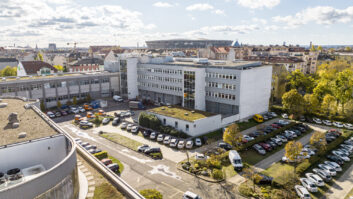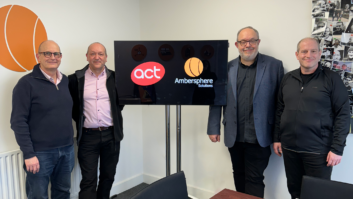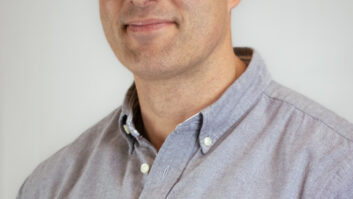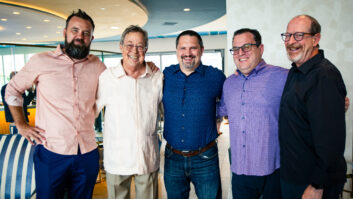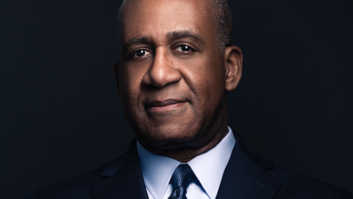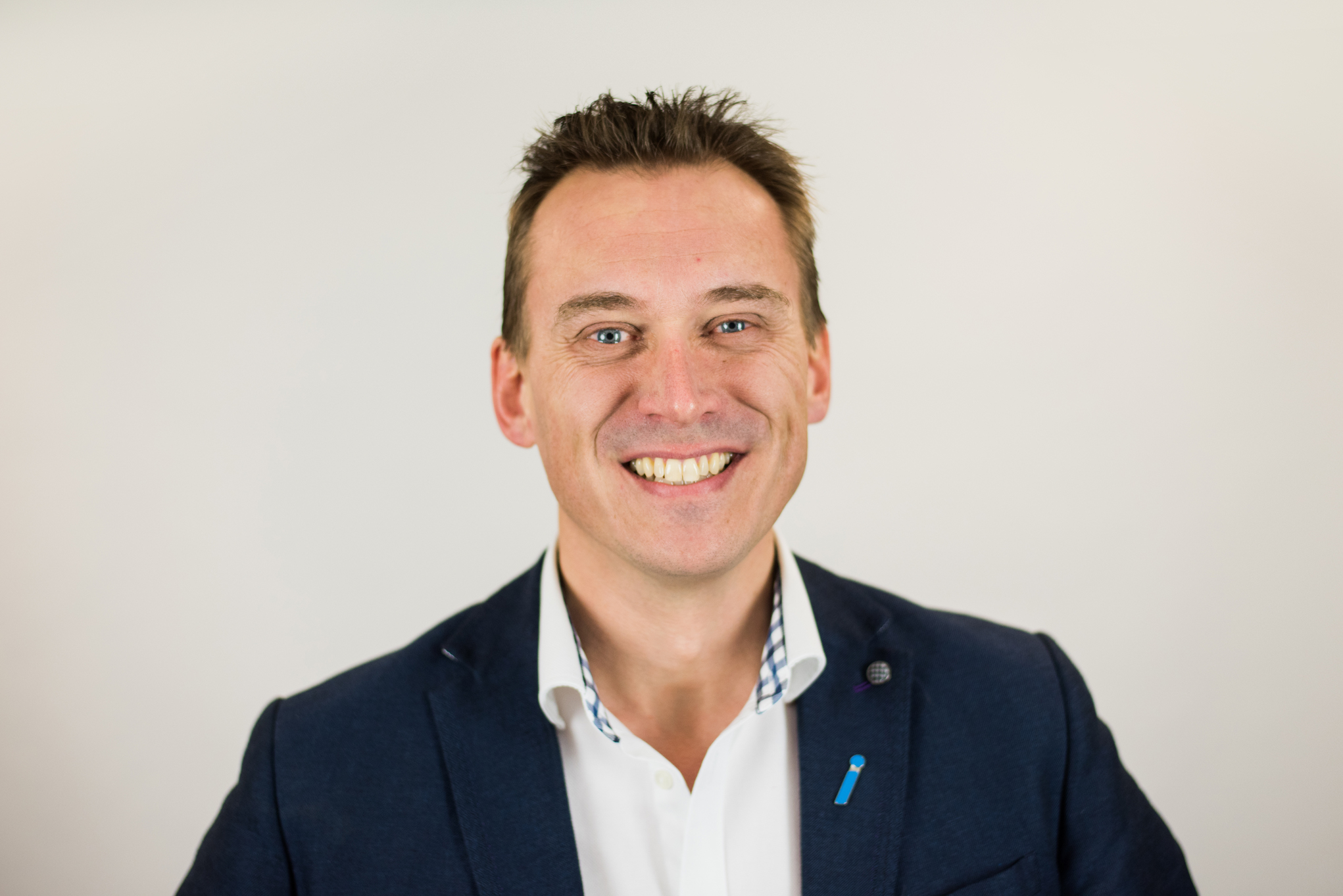
With its cutting edge use of simulation and immersive technologies, Holovis is well placed to make the most of the experience-creation era. Duncan Proctor discusses this and more with CEO Stuart Hetherington.
Tell me about your background before Holovis.
I came from an automotive research background. I was an engineer working in vehicle development and testing at MIRA (Motor Industry Research Association) up here in Warwickshire.
As a young engineer I was involved in lots of physical testing crashing lovely, fast cars. One of the things I ended up spearheading was to do less physical tests and more simulation. I got funding around a concept that I developed for analysing the motion of the crash test dummy in the virtual world linked with the physical world. I developed what was called data suit technology. We worked with various government bodies where we were exposed to these emerging technologies around large scale immersive and virtual systems.
I got further funding to develop what would have been Europe’s first VR CAVE (cave automatic virtual environment) system. Myself and my then boss Joe Jurado, who I was working for at MIRA, ended up building the business case to put in the first ever system over here as a service for the automotive industry. But it didn’t go ahead, predominantly because we were about 10, 12 years ahead of ourselves.
When you started Holovis, what was the focus in the beginning?
Joe and I started the focus of the business around high-end immersive, virtual systems, CAVEs, reality centres, large screen virtual reality and grew the business around our Enterprise division. At this point we didn’t have anything in Entertainment or Simulation. The enterprise offering was the start of Holovis. And it was traditional systems integrator work for clients in the oil and gas industry and eventually into automotive with companies like Jaguar Land Rover, who became one of our biggest customers and still are to this day.
As projects came in, we started delivering more solution-oriented work and service-related work, and started looking at the innovation side of that industry and how we could solve problems. We realised, as we grew Holovis, we wanted to own more of the value chain, rather than putting big displays together and tracking systems, we wanted to get into the development side – software and data. And that gave a springboard to the almost exponential growth that we’ve had over the last 10 years, year on year.
Now with Enterprise and Entertainment divisions – is it an even split between the two or does one arm generate significantly more business than the other?
From a turnover point of view it is a 60/40 or 70/30 split in favour of Entertainment because in entertainment there are larger value projects, but less of them.
They use the same core technologies and skills, we’re not having to divisionalise our workforce, which is one of the core benefits we have. We have one generic team – be it our designers, our install engineers, our creative team, we don’t divide them into Enterprise, Entertainment and our third division – Simulation. The benefit of that is we can have a team working on something for Enterprise for a specific client and the development from that might suddenly be applicable to a new experience or attraction in the entertainment space.
That financial split is still there because of the massive projects going on in the entertainment space, but because we are evolving more as a company into software and data, the opportunity is more in the enterprise space. We’re starting to see the balance moving back to a more even percentage because of that.
You also have a presence in the US, Dubai and China, why those markets in particular?
Opportunities came to us. Initially around core projects, then more people seeing the work in that region and wanting it and we ended up needing a footprint down there. If you take the Middle East for example, we’ve been very successful in the Middle East around the entertainment growth out there. We grew off the back of clients understanding that what we could bring was quite unique. We’ve seen the opportunity and gone for it in those locations.
The US has been prominently around entertainment work to start with. We are a partner with Universal Studios, we develop technology with them. All that innovation work is done back here in the UK, but the project delivery side has a big US element. Orlando became the US office where we’ve got 20 people now. We’re about to open an LA office as well to support some of the more traditional cinema recording markets. But the US is strategically a growth area beyond entertainment, it will be a continuation around our other markets as well.
To finish the picture, China and Hong Kong naturally became a focus for us four or five years ago, and again it was a circumstance that allowed us to go into that space and see the opportunity there. We believe we navigated those waters very successfully to the point where we brought on a minority shareholder from Hong Kong at the beginning of this year, which is the first external investment we’ve brought into Holovis. We were at a point where we needed to grow even faster, so we sold a minority share of the business and brought on a company from Hong Kong called Road King. We’re looking at major offices there, we’ll have around 150-200 people out there in-situ probably by this time next year.
Experience-creation is thought of as being primarily in entertainment sectors, but how do you see that crossing over into enterprise?
It’s a really key thing because as much as we can all probably understand it from an entertainment point of view, there’s a real need for that experience-driven approach in enterprise. We’ve had the industrial revolution, we’re now in the experience revolution and the experience-led economy is the future driving force. We can be sat with a client that might be corporate-focussed, but you will still have a conversation around ‘what’s the experience?’ and ‘how do we deliver that experience?’ The use of storytelling and narrative is something people understand so much more now.
With trends like immersive experiences and interactivity and then technology shifting towards IP and more creative uses of data – while you’ve already had strong growth, you must believe you can take it to another level now.
Exactly that. And the investment is really what has allowed us to do that because in this industry it’s about pace and making sure we keep up. We feel very privileged that we have a unique offering under one roof and have a significant amount of the value chain that our clients look for.
Big Data and AI are buzzwords everyone uses when in reality they are useless unless you actually have the right scalable data. You can’t learn from datasets unless they are significant and you understand what you can achieve with them. Probably our single biggest investment going forward now is in our software team and in our data and data analytics and machine learning division.
In the theme park space, later this year, we’re going to be launching a very specific range of products that are experiences driven with data and analytics that we are collecting for mass venue environments. Tracking people in theme parks and gaining insight from the public data that’s out there as well as the data that they give us as they go through that venue. That’s some of the proprietary, patented work that we’ll be working on. And it’s exponential where that will go because people want to have choices and have experiences that are unique to them to create emotion, create memories or solve problems. But we want to do that in as frictionless a way as possible. A lot of our work is around how we collect that data compliantly, how we manage it from a security point of view, but then how we do that in a way that doesn’t affect the guest in a negative way.
Working with these cutting edge technologies, do you find there are misconceptions with the customers you deal with in terms of their expectations are?
Expectation management changes from client to client. If you take a client that has an enterprise-based challenge their misconceptions may be around VR. At the moment people think VR headsets are going to solve all our problems. Then you get into the nuts and bolts of it – have you got the right data in the headset are you really able to collaborate in those environments? A lot of the time clients think the latest tech is going to solve everything straight off the bat and usually it’s an educational process because there may be far more flexible technology and systems that have been around a lot longer but would actually give a greater impact. Or there are times when clients are applying technology for the sake of it. You see that especially in the entertainment space. The thing at the moment is every theme park has got to have a VR offering, but in reality it’s not delivering.
VR/AR/MR – what sectors do you think these technologies offer value and how far away are we from wider adoption?
If you look at it how we do, we don’t focus on the hardware – we are hardware-agnostic. We start by trying to understand the problem and the experience we are trying to create. Then when we look at the specifics of what does virtual/augmented/mixed reality deliver. Mixed reality and augmented reality is the space that we focus on more than anything because we see the opportunity around the augmentation of virtual information and data and experiences.
As well as being the most exciting, we’re massively constrained by the hardware, but we’ll be in a different place in five years. Where we want to be as Holovis is in the back end of that – the software and data layer – knowing that eventually they’ll be a nice pair of spectacles you can put on that are completely wireless and seamless and will deliver. We will get there eventually, but it’s a lot longer journey than most people think.
How do you see Holovis’ business developing and what emerging technologies are you looking to get involved with?
We are continuing our innovation work across the three divisions to bring next-gen products into those spaces. In Simulation we’re working on some very unique display technology linked with the software elements that will directly go into specific programmes for military simulation and training. The entertainment space will continue to grow heavily on the creative side of it, working with clients around the design of experiences right the way through to delivery because we have that complete turnkey ability.
All of it is really underpinned by the core area, which is in software. If we look ahead a year from now, with our 150 people here [in the UK], 20 in Orlando and the growth in China. I wouldn’t be surprised if in a year’s time those numbers go up 25/30%. But those people will be on the creative, data and software side. Less so on the physical hardware installation and integration side.
